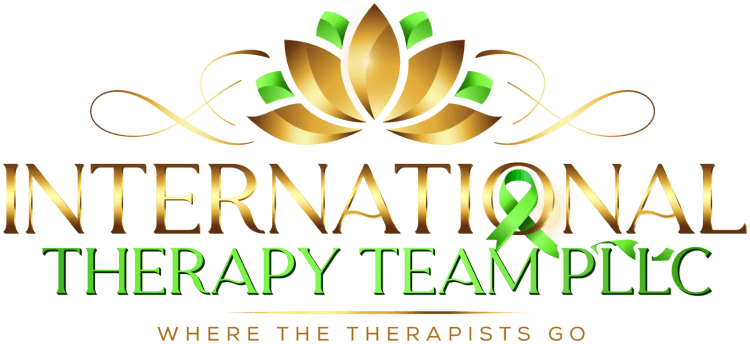Effective communication in mental health therapy sessions is paramount to fostering understanding and empathy between therapist and client. By mastering certain communication skills, therapists can enhance their ability to connect with clients, facilitate healing, and promote positive outcomes.
1. Active Listening for Building Trust
Active listening involves giving full attention to the client and demonstrating understanding through verbal and non-verbal cues. This skill is crucial for building trust and validating the client’s experiences.
Imagine a scenario where a therapist nods occasionally and maintains eye contact, creating a comforting environment that encourages clients to speak openly. Such engagement not only validates the client’s emotions but also strengthens the therapeutic alliance. Integrating active listening into sessions can significantly enhance the therapeutic bond and ensure clients feel heard. By doing so, therapists connect deeply with their clients’ narratives, fostering trust and openness over time.
Incorporating paraphrasing is another effective component of active listening. By restating what the client has said in different words, therapists ensure they have truly understood the message. This approach reflects the therapist’s attentiveness and commitment to grasping the client’s perspective intently.
2. The Art of Asking Open-Ended Questions
Open-ended questions encourage clients to explore their thoughts and feelings in depth. They offer an opportunity for self-reflection and can reveal underlying issues that may not surface with simple yes or no questions.
Such questions can lead to a greater exploration of the client’s emotions and thoughts. For example, instead of asking, “Did that make you feel happy?”, a therapist might reframe the question to, “How did that situation affect your feelings?” This invites the client to delve deeper and express more complex emotions and thoughts. By fostering a space for self-reflection through open-ended questions, therapists help clients uncover layers of their internal world that might otherwise remain unexplored.
Moreover, using a series of open-ended questions can facilitate a more dynamic conversation. It allows clients to steer the discussion in directions they find insightful or necessary. As clients become more comfortable, they might reveal important contextual details they initially felt too vulnerable to share. This ongoing dialogue can lead to profound insights and breakthroughs in therapy.
3. Practicing Empathy in Every Session
Empathy is the ability to understand and share the feelings of another. By practicing empathy, therapists can show genuine care and concern, helping clients feel understood and supported.
Empathy goes beyond basic understanding; it involves stepping into the client’s shoes and viewing the world from their perspective. This deep form of empathy helps to validate the client’s feelings and reinforces a nurturing therapist-client relationship. Practicing empathy might mean acknowledging a client’s emotions explicitly, such as saying, “It sounds like you’re feeling overwhelmed right now.” This validation helps reduce feelings of isolation and can be incredibly reassuring.
An empathetic approach creates a working alliance where the client feels secure enough to share their innermost thoughts. This kind of therapeutic environment facilitates deeper exploration of significant issues, fostering personal growth and healing. Through genuine empathy, therapists help their clients feel seen, heard, and, most importantly, valued genuinely.
4. Using Non-Verbal Communication Effectively
Non-verbal communication, including eye contact, body language, and facial expressions, plays a significant role in conveying empathy and understanding. It reinforces the verbal message and helps create a welcoming therapeutic environment.
Therapists should remain aware of their facial expressions and body posture to prevent conveying unintended messages. A relaxed demeanor and open body language can make clients feel more at ease during sessions. Simple actions, such as nodding or leaning slightly forward when a client speaks, convey engagement and interest non-verbally, strengthening the client’s sense of treatment safety.
Additionally, being mindful of physical space is crucial. Some clients may feel more comfortable with significant physical distance, while others may appreciate close proximity. The key is to observe and adapt to each client’s unique needs, which can significantly impact their comfort and the therapy’s effectiveness.
5. Providing Constructive Feedback
Constructive feedback is essential for guiding clients through their therapeutic journey. Offering specific, actionable insights helps clients focus on areas of growth and improvement.
Receiving feedback can be a sensitive process; hence, it’s vital to ensure that it’s delivered with empathy and clarity. Constructive feedback should offer specific observations that clients can reflect upon. For instance, instead of saying “You’re always late”, a more constructive approach could be, “I’ve noticed there were a few sessions where you arrived late. Let’s explore if there are any underlying issues causing this.” This tone is supportive and non-judgmental, easing the way for clients to accept and act on the feedback.
Regular, thoughtful feedback can empower clients by illuminating pathways for change while maintaining their dignity and agency within the therapy process. Encouraging self-awareness and personal responsibility ensures that feedback becomes a tool for positive transformation achieving growth.
6. Cultivating Cultural Sensitivity
Cultural sensitivity involves recognizing and respecting the diverse backgrounds and values of clients. This awareness helps therapists tailor their communication and interventions to better meet the individual needs of each client.
A therapist’s ability to recognize cultural nuances and differences is key in establishing trust. This understanding requires an ongoing commitment to learning about and appreciating diversity. By being mindful of cultural backgrounds, therapists can avoid misinterpretations and deliver more personalized interventions. Sensitivity to cultural dimensions reinforces client trust, ensuring they feel heard and acknowledged within their own cultural context.
By actively engaging in cultural competence, therapists can bridge potential communication gaps and facilitate more meaningful dialogues. This skill not only enhances the therapeutic process but also significantly contributes to the client’s overall sense of belonging and respect.
7. The Importance of Boundaries
Setting and maintaining boundaries is essential for a healthy therapeutic relationship. Clear boundaries ensure that both therapist and client feel comfortable and respected, which is vital for effective communication and therapy.
It’s crucial for therapists to communicate boundaries clearly from the onset to manage expectations and prevent misunderstandings. This involves establishing guidelines on the frequency of sessions, communication outside sessions, and the scope of the therapy. Such clarity fosters a safe space for clients, empowering them to explore their challenges without feeling exposed or vulnerable.
Boundaries are not static; they require constant assessment and negotiation as therapy progresses. A flexible boundary approach respects the client’s evolving needs and adapts to new developments within the therapy process. When both parties understand and agree on boundaries, it leads to an environment of mutual respect and understanding, essential for any therapeutic success.





